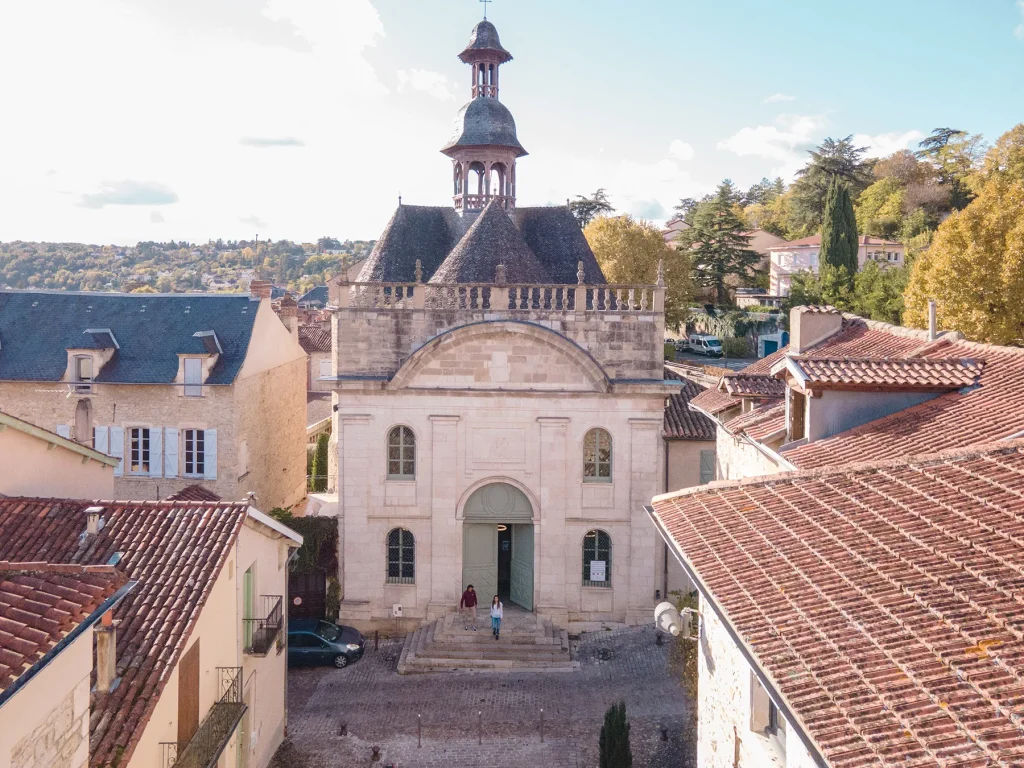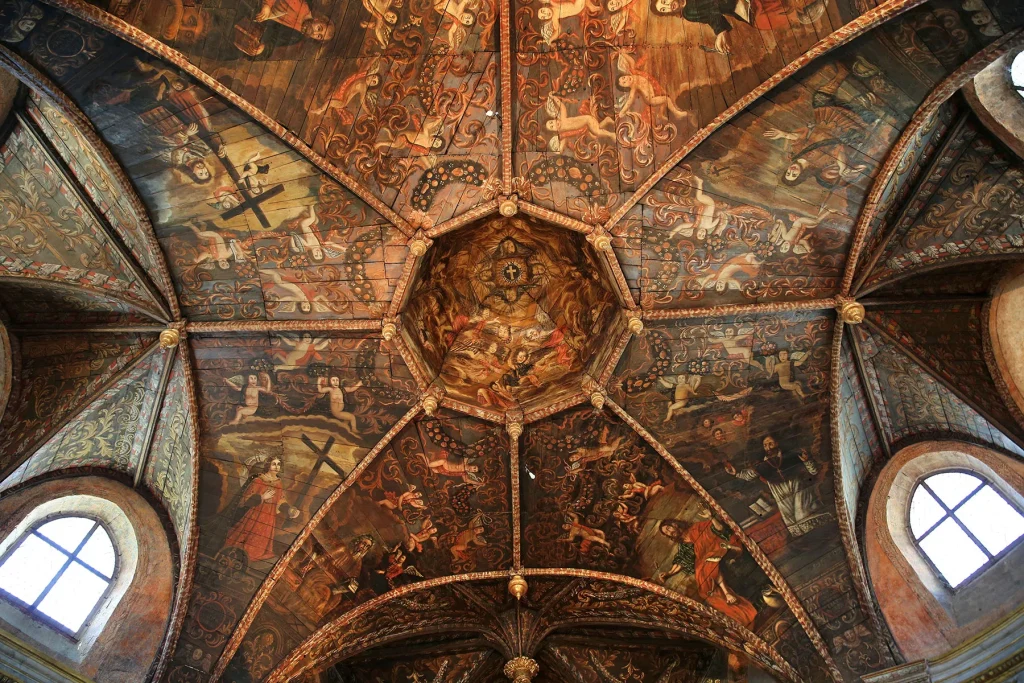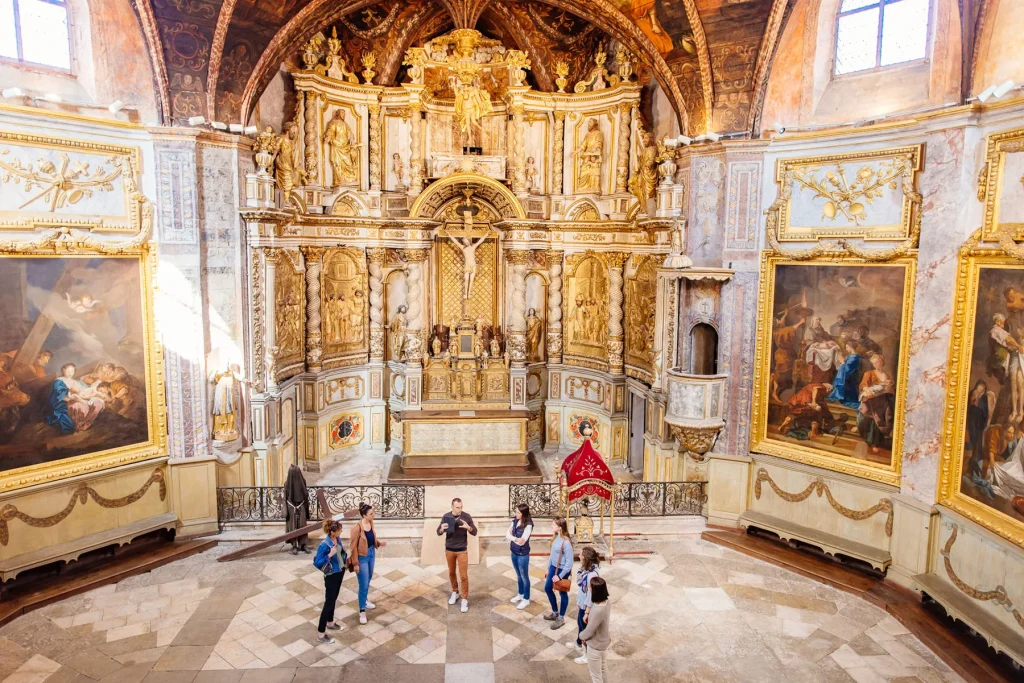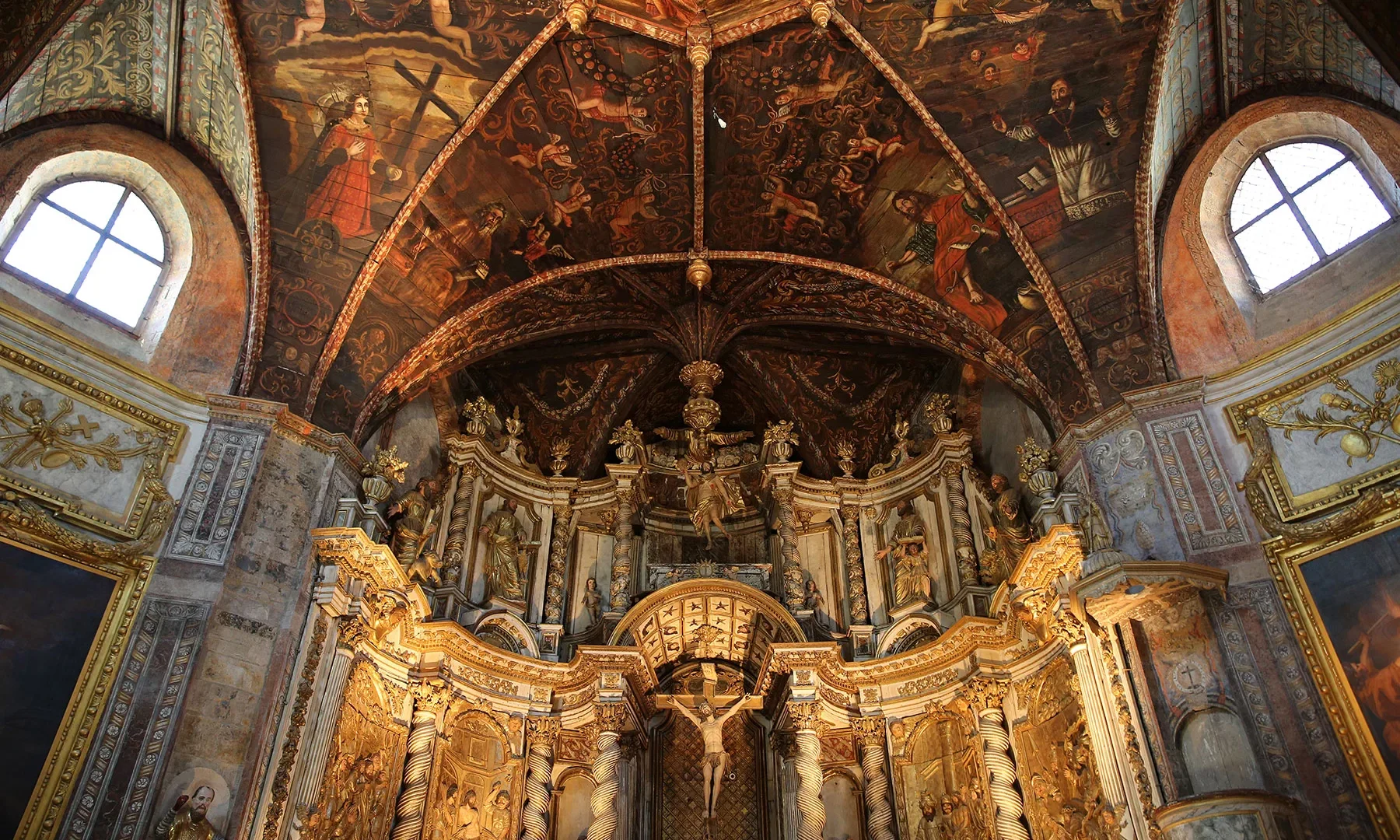The chapel of the Black Penitents, a nugget to discover in the heart of the bastide town of Villefranche de Rouergue. Let yourself be told the story of this exceptional monument.
A classic style exterior
La classical east facade, rather rigid, with semicircular arches, rectilinear pilasters and a tympanum taking the form of an omega. We are here in a resumption of patterns from antiquity as Vitruvius pointed out in most of his treatises. Here, the last letter of the Greek alphabet marks the encounter between finite man and infinite god, in connection with spirituality and brotherhood activity. The balustrade was not installed until a few decades later, as was the double bell tower which seems to lean in different directions depending on the season of the year. The ground plan corresponds to a Greek cross, modeled on the Holy Sepulcher in Jerusalem and on the Saint-Jérôme Chapel of the Blue Penitents of Toulouse. The choir is deliberately occidenté so that we can amaze the population when we open the doors of the chapel, in order to encourage more people to join the brotherhood.

Inside: an exceptional decor

The vault
Made at the end of the 1701th century and completed in XNUMX by the local workshop of Matthew and Pierre Guy, vault consists of the old planks that made up the floor of the refectory of Loc-Dieu Abbey. Now she presents a rich iconography taking up the history of the cult of the cross. In addition to the cloud of cherubs radiating around the labarum, there are Constantine I, the first Christian emperor, Louis XIV, king of France who revoked the Edict of Nantes, Saint Helena, discoverer of the first pieces of the torture object, Saint François de Sales, one of the main actors of the Catholic Counter-Reformation, and the four evangelists with their attributes, Saint Luke and the bull, Saint Mark and the lion, Saint Matthew and the angel and Saint John and the eagle. Treated in a naive and rural way, they take place in the middle of garlands of flowers, vegetal arabesques and silk ribbons, typical of Baroque ornamentation.
The altarpiece
Probably the work of a workshop with Hispanic influences, the altarpiece was made between 1709 and 1725. Entirely in wood enhanced with colors and gold leaf, it is organized on two superimposed planes. The first level refers to the earthly life of Christ while the second evokes the celestial world. First, surrounding the Crucifixion, four panels illustrate theArrest of Jesus on the Mount of Olives, the Flogging, Ecce Homo and Carrying of the Cross. Above the starry coffered vault, rises from his tomb the risen Christ during his Ascension. He is welcomed into heaven by God the Father as well as the dove of the Holy Spirit materializing the Trinity. Although we also find the presence of the four evangelists, composite capitals decorated with acanthus leaves and birds, flower pots and fire pots, cut leathers and twisted and fluted columns complete the decor.
The paintings
Inserted in the 1760s on the site of the initial bays, the six large paintings are the work of the Toulouse painter Charles Dujon. Made on copies of Jean-Baptiste Jouvenet, Carl von Loo and Boulogne le Jeune, they highlight certain key episodes of Catholic dogma. The Annunciation faces the Presentation in the Temple while Crossing faces the Deposition and that Nativity faces the Marriage of Mary and Joseph. Surrounded by plasterwork made up of ovals and stripes of heart, they are surmounted by gilding representing processional staffs, chalices, monstrances, musical instruments, wheat and vines. They are separated by pilasters covered with faux marble under which the primitive decoration of the XNUMXth century has been preserved on some.





